Beyond A/B Testing: A Starter Guide to Journey-Based Personalization for 6sense Users
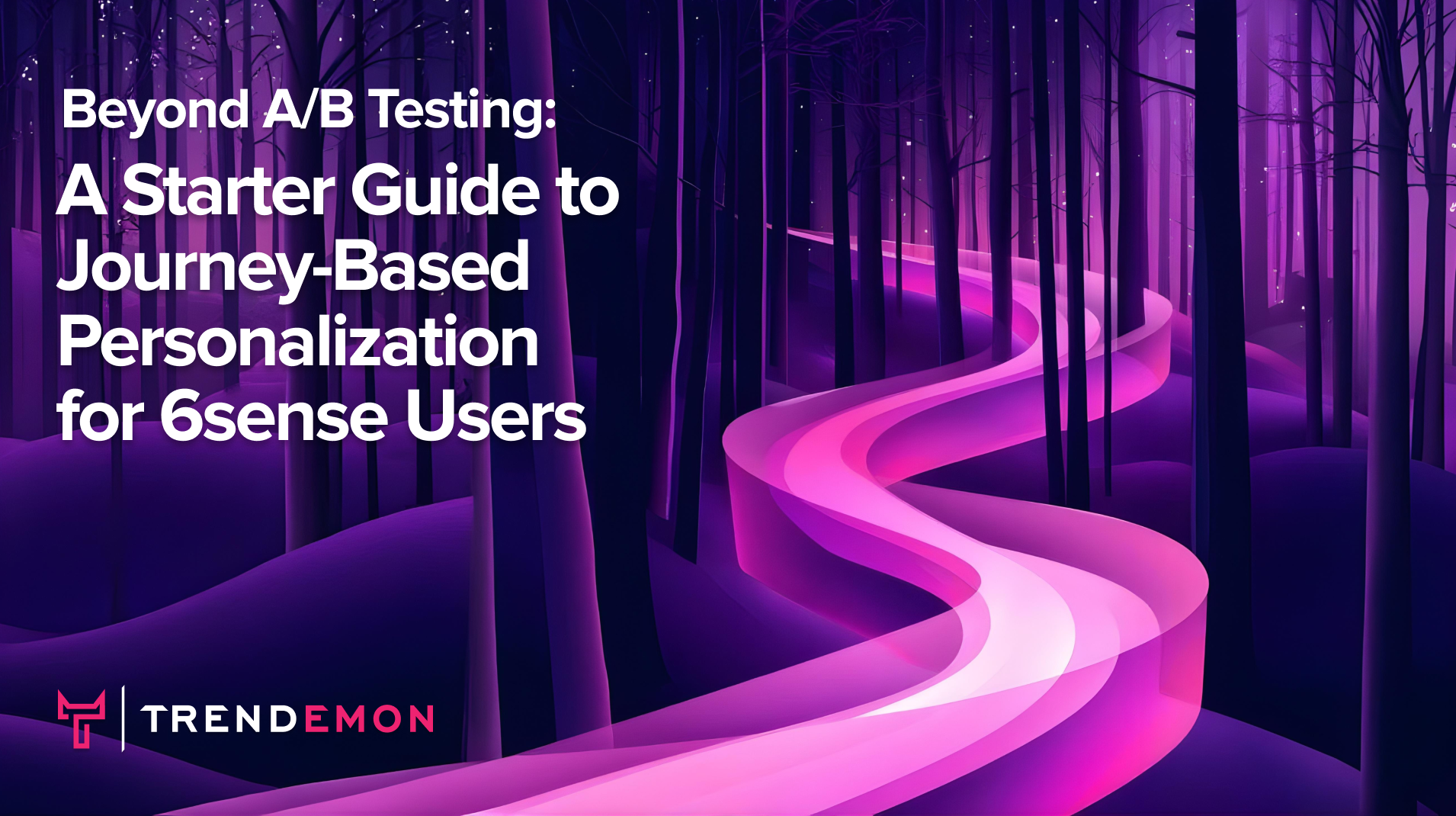
Website optimization in B2B has long been stuck at the page level and it’s been plateauing for a while. You run an A/B test. You tweak a CTA. You swap a headline. Maybe conversions nudge up a few points but then they plateau.
Why?
Because what works for one visitor doesn’t reflect how real B2B decisions are made, yet websites are designed to give a one-size-fits all experience. According to Forrester, less than 50% of B2B marketers have a documented personalization strategy, meaning a majority of B2B websites still deliver the same experience to all visitors.
And if you’re a 6sense user, you already know your audience isn’t made up of solo visitors but of buying groups – multiple people, multiple roles, different priorities with various stages of readiness. Static page tests simply don’t account for that complexity.
You will need a shift from optimizing pages to optimizing journeys. We’ll show you how to activate 6QA insights across your site in a way that adapts to buyer roles, buying stages, and real content behavior—without needing a full tech overhaul.
Let’s get into it.
What ‘Journey-Based’ Really Means
Journey optimization is commonly thought of as moving visitors from the home page to either an offer page, a webinar registration page, or a download resource page via pop-ups.
But journey-based personalization is different. It’s not about optimizing pages, but about ‘moving’ visitors intentionally across the website. It’s building a narrative, and guiding them through a structured journey that adapts to where they are in their buying process, who they are within the buying group, and what they’ve already engaged with.
It moves beyond fragmented page updates into something cohesive, contextual, and sequenced.
Let’s break that down:
- Single-experience personalization is what most marketers are familiar with: swapping a line of copy based on industry, or serving a relevant case study based on UTM parameters. It’s reactive, rule-based, and page-specific.
- Journey-based personalization is proactive. It anticipates the questions, objections, and content needs of different personas across sessions, channels, and stages, and dynamically adapts the website experience to guide them forward.
For example:
- A first-time visitor from a 6QA segment might be shown an educational content path tailored to their vertical.
- A returning stakeholder from the same account, say, a procurement lead might see ROI proof points and competitive comparisons.
- A technical evaluator might be dropped into integration resources and documentation.
None of this requires rebuilding your site. It simply means using the intent signals you already have especially from platforms like 6sense to guide buyers through curated journeys, not generic funnels.
And once you start thinking in journeys, you unlock a new tier of personalization that’s both scalable and deeply effective.
The Easiest ABM Stack You’ll Ever Launch
If you’re already using 6sense, you’ve done the hard part of gathering intent signals, segmenting accounts, and identifying buying stages. The only thing missing is a way to activate those insights on your website.
That’s where Trendemon fits in.
There’s no need to rebuild your site, add dev sprints, or shuffle your CMS. Trendemon sits on top of your existing website and connects directly to your 6sense segments—no duplicate workflows or manual tagging required.
Here’s the minimal setup:
- 6sense Segments → Automatically sync into Trendemon as dynamic audiences.
- Trendemon → Matches those audiences to relevant content and orchestrates their journey in real time.
- Analytics Layer → Tracks which content paths work best for each segment, optimizing future experiences automatically.
You don’t need complex decision trees, bloated personalization platforms, or a team of developers to make this work. The orchestration is automated, and content mapping can start with a single prompt (more on that in the Journey Playbook).
Once you’ve got this set up running, here are three quick wins you can launch this week.
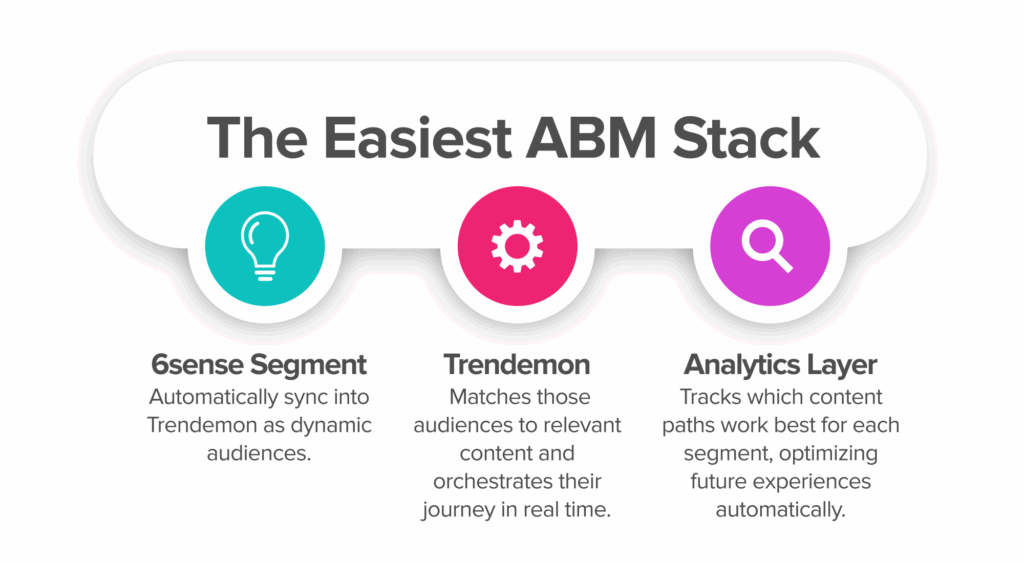
3 Quick-Win Plays You Can Launch This Week (with Trendemon)
With your 6QA segments in 6sense and Trendemon’s orchestration layer, you can deploy meaningful experiences in a matter of days.
Here’s how: 👇
1. First-Touch Content Trail
Goal: Turn cold visits into warm interest.
In Trendemon, connect your 6QA “early-stage” segments directly to relevant top-of-funnel content. As soon as one of these accounts lands on your site, Trendemon dynamically serves a curated content journey starting with thought leadership, then easing into product relevance. No manual setup needed. Enabling a content trail helps build trust early and lets buyers self-educate without pressure, keeping them in your funnel longer.
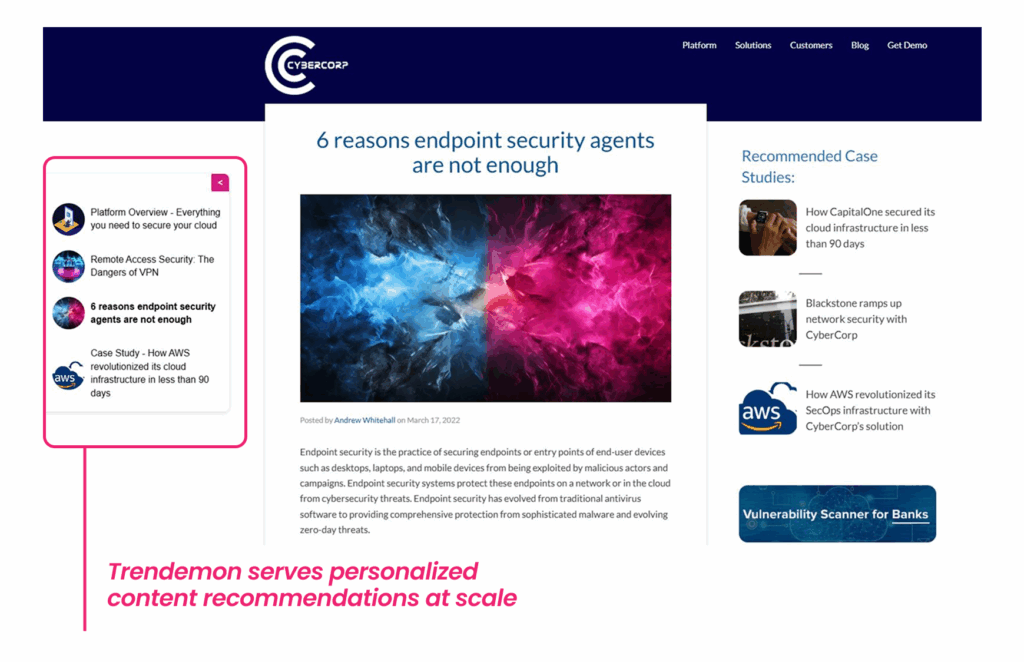
2. Buying-Group Split Paths
Goal: Serve tailored journeys by role.
Using Trendemon’s audience builder, you can create persona-level audiences—like “technical stakeholders” or “economic buyers” based on 6sense data, on-site behavior, and UTM parameters. Then, assign different content and CTAs for each group. A VP of Finance sees ROI content. A DevOps manager sees implementation guides.
Aligning messaging with each buyer’s priorities, helps teams create different forms of messaging that resonate with the audience’s painpoints, enabling faster & more qualified conversions.
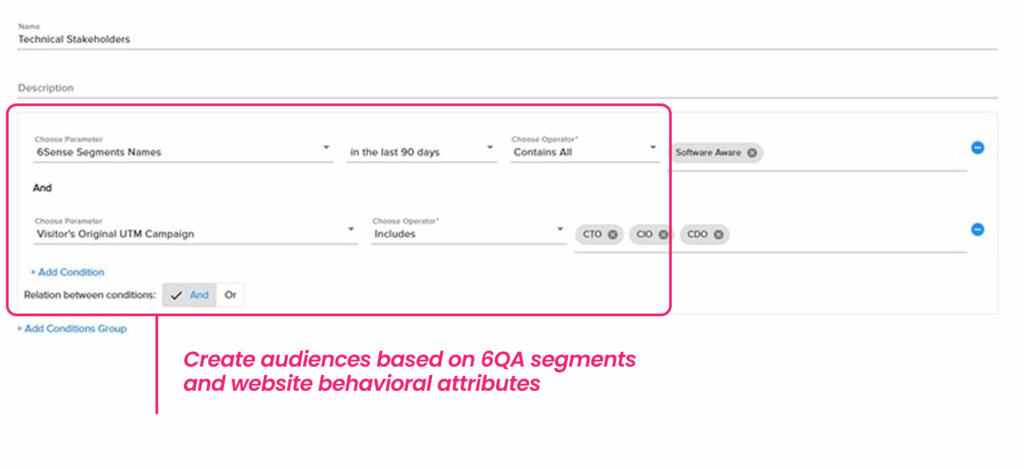
3. Late-Stage Proof-Point Carousel
Goal: Nudge known accounts toward action.
Trendemon tracks engagement depth and revisit behavior. When a 6QA account shows high intent (e.g. multiple return visits, deep content consumption), trigger a rotating block of proof assets—like customer logos, G2 quotes, or tailored case studies—to help seal the deal.
Personalizing high intent return visits with validation gives that extra push over the line without requiring extra sales follow-up.
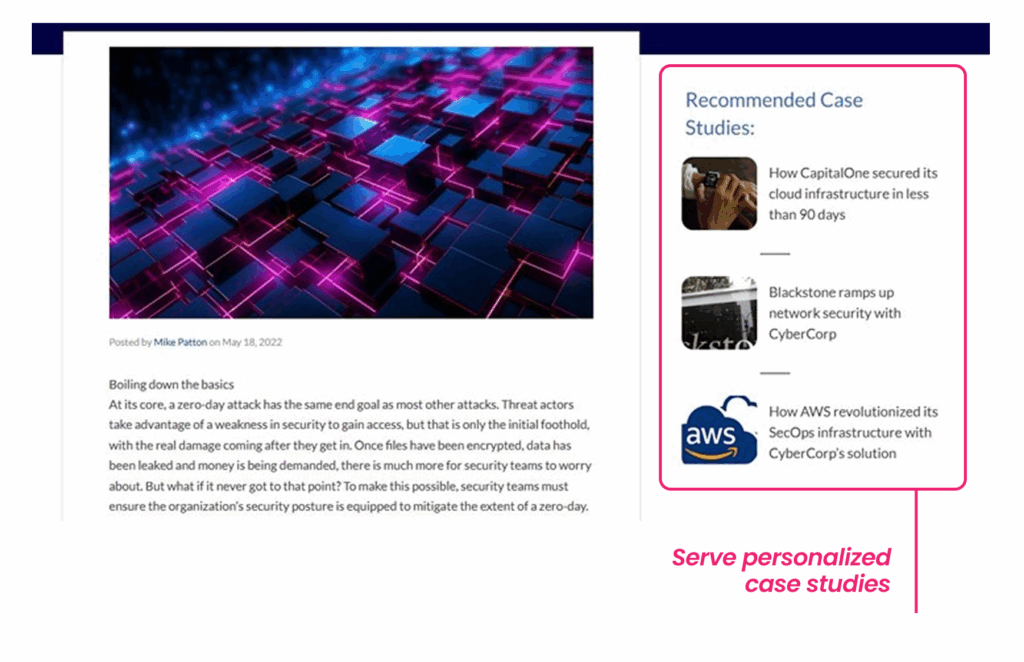
Special offer for 6sense customers!

Measuring Metrics that Actually Show ABM Impact
Page-level tests may give you surface metrics—like CTA clicks or bounce rates—but they don’t tell you whether the journey worked.
If you’re personalizing based on 6QA insights, your metrics should reflect the movement of buying groups, not isolated visitors. Here are the ones that matter:
1. Journey Completion Rate
Track how many visitors from your 6QA segments follow the full intended path—like visiting a proof point after a product overview. This helps you measure real engagement, not just pageviews.
2. Pipeline Influenced by Segment
Tie Trendemon’s journey data to your CRM to see which 6QA audiences engaged—and how that behavior influenced pipeline. Now your sales team knows which accounts are actually warming up.
3. Time-to-Deal Acceleration
Compare the sales cycle length for accounts exposed to personalized journeys vs. those that weren’t. The difference can be a key proof point for leadership.
When demonstrating ROI to leadership and stakeholders, you need more than just CTRs and impressions. You need data on intent, progress and ROI which are key metrics that demonstrate impact.
Ready to Launch? Start with One Journey
You don’t need to overhaul your entire site or rewrite hundreds of pages to start seeing results. One mapped journey for one key segment can be enough to prove value and spark real movement in your pipeline.
To make it even easier, we’ve created a resource to help you start:
Download the Journey Playbook PDF – it includes a prompt you can use right now to tag your website content to 6QA segments and uncover buying group intent based on real content behavior.
👉 Want to see how this scales across your site?
Book a 30-min Journey Ideation Session and we’ll show you how other 6sense users are running this today—without waiting on dev teams or tech overhauls.
It’s time to move beyond tweaks.
Let’s start building journeys.